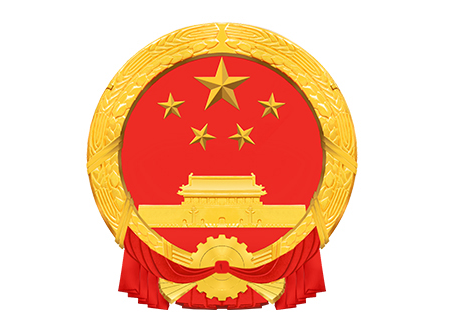China National Emblem is a symbol that represents the country and its values. It was officially adopted by the People’s Republic of China (PRC) on September 20, 1950, and has since become an important part of the country’s cultural heritage. In this article, we will explore the history, meaning, and significance of China national emblem.
History of the China National Emblem
The origins of China’s national emblem can be traced back to the late 19th century when the country was ruled by the Qing dynasty. During this time, China did not have an official national emblem, and the country was often represented by the dragon symbol, which was associated with the emperor.
After the fall of the Qing dynasty in 1911, China became a republic, and a new national emblem was needed to represent the new government. In 1912, the Republic of China adopted a national emblem that featured a five-pointed star and a white sun on a blue background.
When the Communist Party of China (CPC) came to power in 1949, a new national emblem was designed to represent the new government. The design was created by Zeng Liansong, a famous artist and designer, and was officially adopted on September 20, 1950.
Design and Meaning of the China National Emblem
The China national emblem is a circular design featuring Tiananmen Gate, the Great Wall of China, five stars, and ears of grain. The design is rich in symbolism and represents the country’s political ideology, cultural heritage, and economic development.
Tiananmen Gate
The central feature of the national emblem is Tiananmen Gate, which is located in the heart of Beijing and serves as the entrance to the Forbidden City. Tiananmen Gate is a symbol of the country’s political power and is the site of many important ceremonies and events.
The Great Wall of China
The Great Wall of China is a symbol of the country’s cultural heritage and its long history. The wall represents China’s strength and determination to defend itself against external threats.
Five Stars
The five stars on the emblem represent the unity of the Chinese people under the leadership of the Communist Party of China. The largest star represents the party, and the four smaller stars represent the country’s four social classes: the working class, the peasantry, the urban petite bourgeoisie, and the national bourgeoisie.
Ears of Grain
The ears of grain on the emblem represent the country’s economic development and the importance of agriculture to the Chinese people.
Significance of the China National Emblem
The China national emblem is an important symbol of the country’s political ideology, cultural heritage, and economic development. It is displayed prominently on the national flag, government buildings, and official documents.
The emblem represents the country’s commitment to socialism and the unity of the Chinese people under the leadership of the Communist Party of China. It also represents the country’s determination to defend itself against external threats and its economic progress.
FAQs
- What is the history of the China national emblem?
The national emblem was officially adopted by the People’s Republic of China (PRC) on September 20, 1950, and has since become an important part of the country’s cultural heritage.
- What is the meaning of the China national emblem?
The emblem represents the country’s political ideology, cultural heritage, and economic development. It is a symbol of the country’s commitment to socialism and the unity of the Chinese people under the leadership of the Communist Party of China.
- What does Tiananmen Gate represent on the China national emblem?
Tiananmen Gate is a symbol of the country’s political power and is the site of many important ceremonies and events. It represents the strength and determination of the Chinese people to protect their nation’s sovereignty.
- What is the significance of the five stars on the China national emblem?
The five stars represent the unity of the Chinese people under the leadership of the Communist Party of China. The largest star represents the party, and the four smaller stars represent the country’s four social classes.
- What is the role of the China national emblem in Chinese culture?
The national emblem is an important symbol of Chinese culture and is displayed prominently on the national flag, government buildings, and official documents. It represents the country’s political ideology, cultural heritage, and economic development.
Conclusion
In conclusion, the China national emblem is a symbol that represents the country’s political ideology, cultural heritage, and economic development. It is a richly symbolic design that features Tiananmen Gate, the Great Wall of China, five stars, and ears of grain. The emblem represents the unity of the Chinese people under the leadership of the Communist Party of China and the country’s determination to defend itself against external threats. It is an important part of China’s cultural heritage and is displayed prominently on the national flag, government buildings, and official documents.
References
- “National Emblem of the People’s Republic of China.” China.org.cn. https://www.china.org.cn/english/features/70th-anniv-PRC/2019-09/16/content_75280773.htm (accessed April 5, 2023).
- “China National Emblem.” China Highlights. https://www.chinahighlights.com/travelguide/special-report/china-national-emblem.htm (accessed April 5, 2023).
- “National Emblem of the People’s Republic of China.” Britannica. https://www.britannica.com/topic/National-Emblem-of-the-Peoples-Republic-of-China (accessed April 5, 2023).
.
